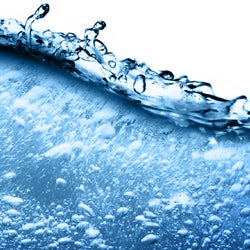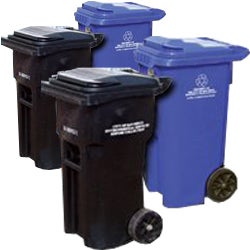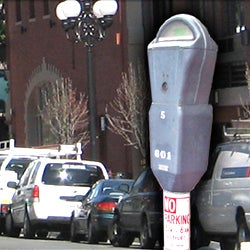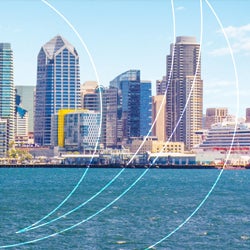Frequently Asked Questions
- What are the Uniform Fire and Building Codes and where can they be purchased?
- What are hazardous materials?
- What is an explosive?
- What is the definition of "Class I-A," "Class I-B," "Class I-C" liquid?
- What is the proper use and handling of Class I liquids in glass containers?
- Can I use plastic containers for flammable liquids?
- I have seen information on flash points for various concentrations of aqueous ethanol. Can this serve as a basis for other flammables?
- When determining the flash point of a mixture, what kind of percentages of various contents need to be considered?
- What constitutes proper separation of incompatible materials in a storage cabinet?
- How do I handle compressed gas cylinders?
- Can I use a portable hazardous materials storage building?
- My insurance company tells me that I have been storing materials too close to the sprinkler heads? What is this all about?
- When anchoring a cabinet for seismic activity, wouldn't the integrity and listing of the cabinet be affected?
- Does my flammable liquid and hazardous materials storage locker need self-closing doors?
- I need to use an extension cord on a long-term basis. What type is approved for use in my facility?
What are the Uniform Fire and Building Codes and where can they be purchased?
The Uniform Fire Code (UFC) and Uniform Building Code (UBC) are model codes that are adopted as part of the Municipal Code. The UFC is published by the International Fire Code Institute and the UBC is published by the International Conference of Building Officials (ICBO).
Both code references may be purchased at any good technical book store and the UBC may be purchased at the City's Development Services Department, Third Floor, 1222 1st Ave, San Diego, CA 92101. The codes are also available through ICBO at (800) 284-4406.
ICBO also publishes the California state fire and building codes. These codes govern schools, public assemblies, multiple unit residential buildings, hospitals, nursing homes and any state-licensed or state-owned facility.
What are hazardous materials?
Hazardous materials are those chemicals or substances which are physical hazards or health hazards as defined and classified in Article 80 of the Uniform Fire Code. The term applies to materials in both useable or waste conditions.
What is an explosive?
A chemical that causes a sudden, relatively instantaneous release of pressure, gas and heat when subjected to sudden shock, pressure, or high temperatures, or
A material or chemical, other than a blasting agent, that is commonly used or intended to be used for the purpose of producing an explosive effect and is regulated by Article 77 of the Uniform Fire Code.
What is the definition of "Class I-A," "Class I-B," "Class I-C" liquid?
Class I-A liquids include those having a flash point below 73 Degrees F (22.8 C) and having a boiling point below 100 Degrees F (37.8 C).
Class I-B liquids include those having a flash point below 73 Degrees F (22.8 C) and having a boiling point at or above 100 Degrees F (37.8 C).
Class I-C liquids include those having a flash point at or above 73 Degrees F (22.8 C) and below 100 Degrees F (37.8 C).
What is the proper use and handling of Class I liquids in glass containers?
The maximum size of glass containers allowed is found in the Uniform Fire Code, Table 7902.1-A. The maximum size for a Class I-A* liquid is 1 pt.; for a Class I-B* liquid, it is 1 qt.; for a Class I-C liquid, it is 1 gal.; for a Class II liquid, it is 1 gal. and for a Class III liquid, it is 5 gal.
Class I-A and I-B may be stored in 1 gal. glass containers if the required liquid purity, such as American Chemical Society analytical reagent grade or higher, would be affected by storage in metal containers or if the liquid would cause excessive corrosion of a metal container.
If glass containers containing Class IA or IB liquids, over 1 qt. and up to 1 gal., are stored outside a flammable liquid cabinet on shelves or in work areas, they must be protected by a plastic caddy or be plastic-coated (safety-coated). In addition, if containers are stored on shelves, the shelves must be adequately anchored and braced, with a lip or guard to prevent containers from being displaced.
Class I waste liquids may be stored in glass containers up to 1 gal. with plastic caddies or plastic-coated bottles, provided they are located within flammable liquid cabinets or fume hoods. All other class I waste liquids must be in approved safety cans.
Can I use plastic containers for flammable liquids?
You may use plastic containers only if they are listed approved containers.
Fifty-five gallon drums that contain Class I liquids (those with a flashpoint below 100 degrees F) must be metal. However, some processes mix Class I liquids with acids which should not be stored in metal containers. In this situation, storage in fifty-five gallon drums is allowed when the drums are located outside of the building in an approved location or within a Group H, Liquid Storage Room.
I have seen information on flash points for various concentrations of aqueous ethanol. Can this serve as a basis for other flammables?
Flammable liquids that are water miscible may have decreased flash points when mixed with water. If you are able to supply us with data that will allow us to calculate the flash point of these mixtures, we will use it. Otherwise these liquids will be considered flammable unless tested using an approved method for flash point.
When determining the flash point of a mixture, what kind of percentages of various contents need to be considered?
For water miscible liquids, see the previous question. For other mixtures of liquids, the flash point of the entire liquid will be classified the same as that of the liquid with the lowest flash point.
What constitutes proper separation of incompatible materials in a storage cabinet?
Generally, materials which are incompatible may not be stored in the same cabinet.
The following guidelines apply:
- Flammable liquid cabinets should contain flammable and combustible liquids only. Compatible solvents such as methylene chloride and 1,1,1-trichloroethane are allowed.
- Incompatible acids should be stored separately from each other (such as nitric acid, perchloric acid, acetic acid).
- Acids and bases must be stored separately.
- All cabinets that contain hazardous materials, whether approved or not, must be labeled on the outside as to its contents. Letters must be at least 1 inch high.
- Small amounts of some incompatible acids may be allowed in the same cabinet when approved by the inspector.
How do I handle compressed gas cylinders?
Whether in storage or use, compressed gas cylinders must be adequately secured to prevent cylinders from falling or being knocked over (UFC 7401.6.4). We recommend that you use a metal chain to secure cylinders. Any other type of restraint should be approved by the CEDMAT inspector.
Can I use a portable hazardous materials storage building?
Yes, you can. However, prefabricated buildings used for the storage and use of hazardous materials must meet the same requirements as buildings constructed on site. This includes existing buildings not previously approved by our Department or by Development Services.
A less expensive alternative to these buildings may be exterior storage. The UFC allows a fenced enclosure with a roof for the storage of hazardous materials. This would not be classified as a building. Such an enclosure must also meet all other UFC requirements for exterior storage.
My insurance company tells me that I have been storing materials too close to the sprinkler heads? What is this all about?
The following guidelines are in place to insure that the water flowing from the sprinkler heads is not obstructed by storage. Generally storage of materials must be located 18 inches below sprinkler heads. When there is storage against walls, the storage should not be any closer horizontally to the sprinkler head than 4 inches.
When there are bookcases or shelves that are in the middle of a room, the storage may go to the ceiling if sprinkler heads on both sides are located:
- no less than 4 inches from the shelf or wall;
- no further than 7 ½ feet from the shelf or wall; and
- no further than 15 feet between sprinkler heads.
When anchoring a cabinet for seismic activity, wouldn't the integrity and listing of the cabinet be affected?
Yes, the integrity and listing of the cabinet could be compromised by seismic anchoring. Care should be taken not to alter or damage a cabinet in any way during anchoring. Fire and Hazard Prevention Services recommends that the business contact the manufacturer of the cabinet before anchoring the cabinet.
Does my flammable liquid and hazardous materials storage locker need self-closing doors?
Since the adoption of the 1979 Uniform Fire Code, a flammable liquid storage cabinet has been required to have doors that are self-closing and tight-fitting. An older cabinet approved without self-closing doors and that has been in continuous use since 1978 in the same location can continue to be used provided it meets all required criteria.
A complete outline of these requirements can be found in the 1997 Uniform Fire Code.
I need to use an extension cord on a long-term basis. What type is approved for use in my facility?
A listed powertap with overcurrent protection may be used. The powertap must plug directly into the wall outlet.























